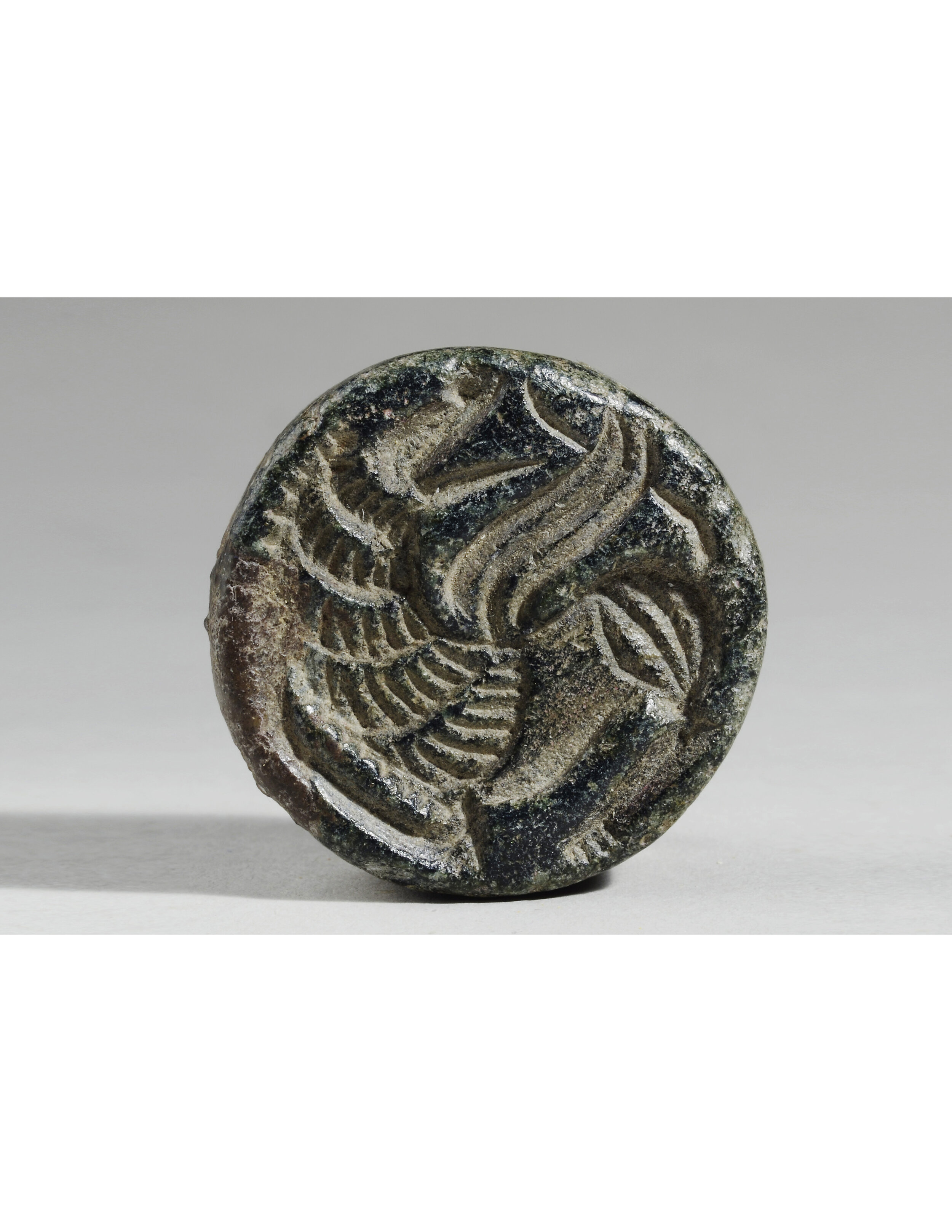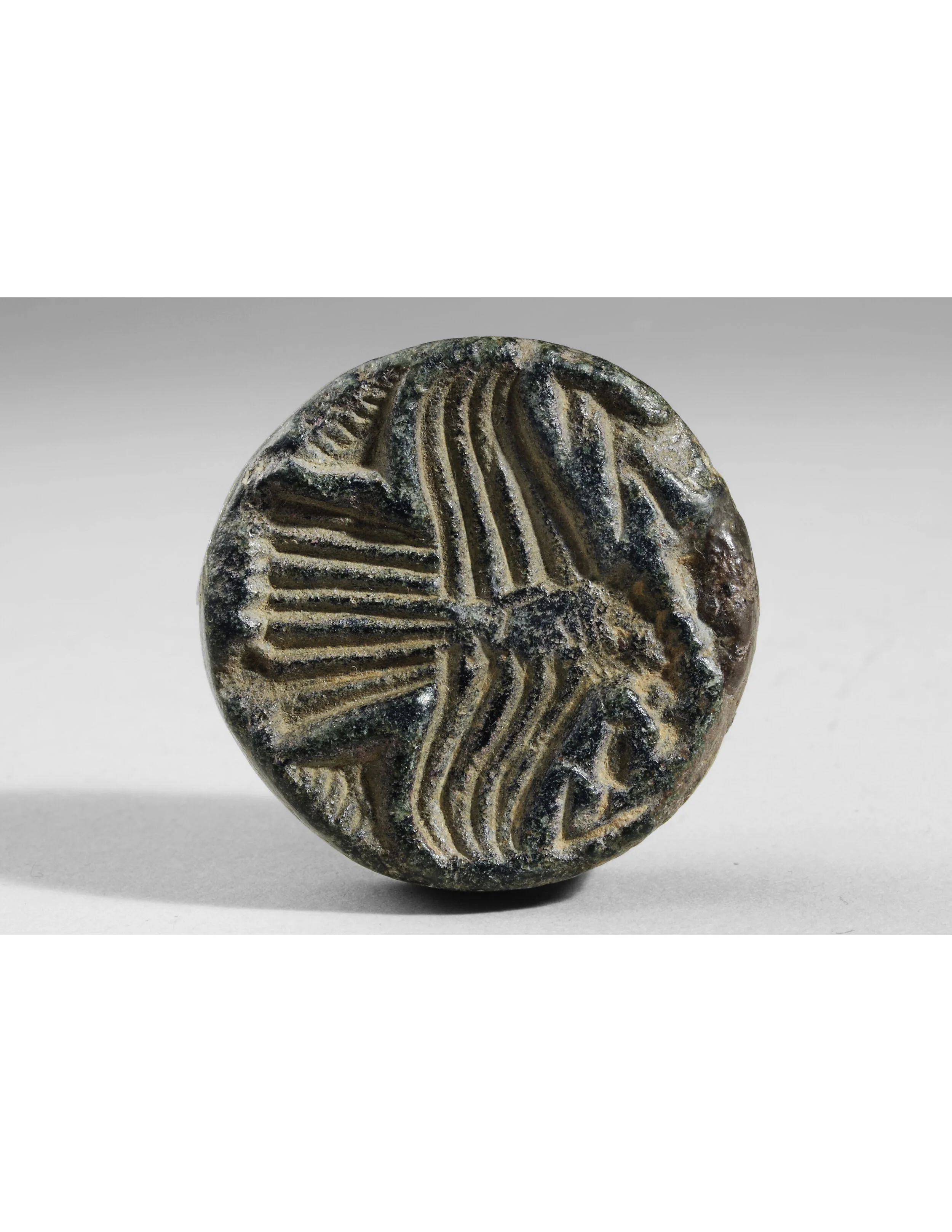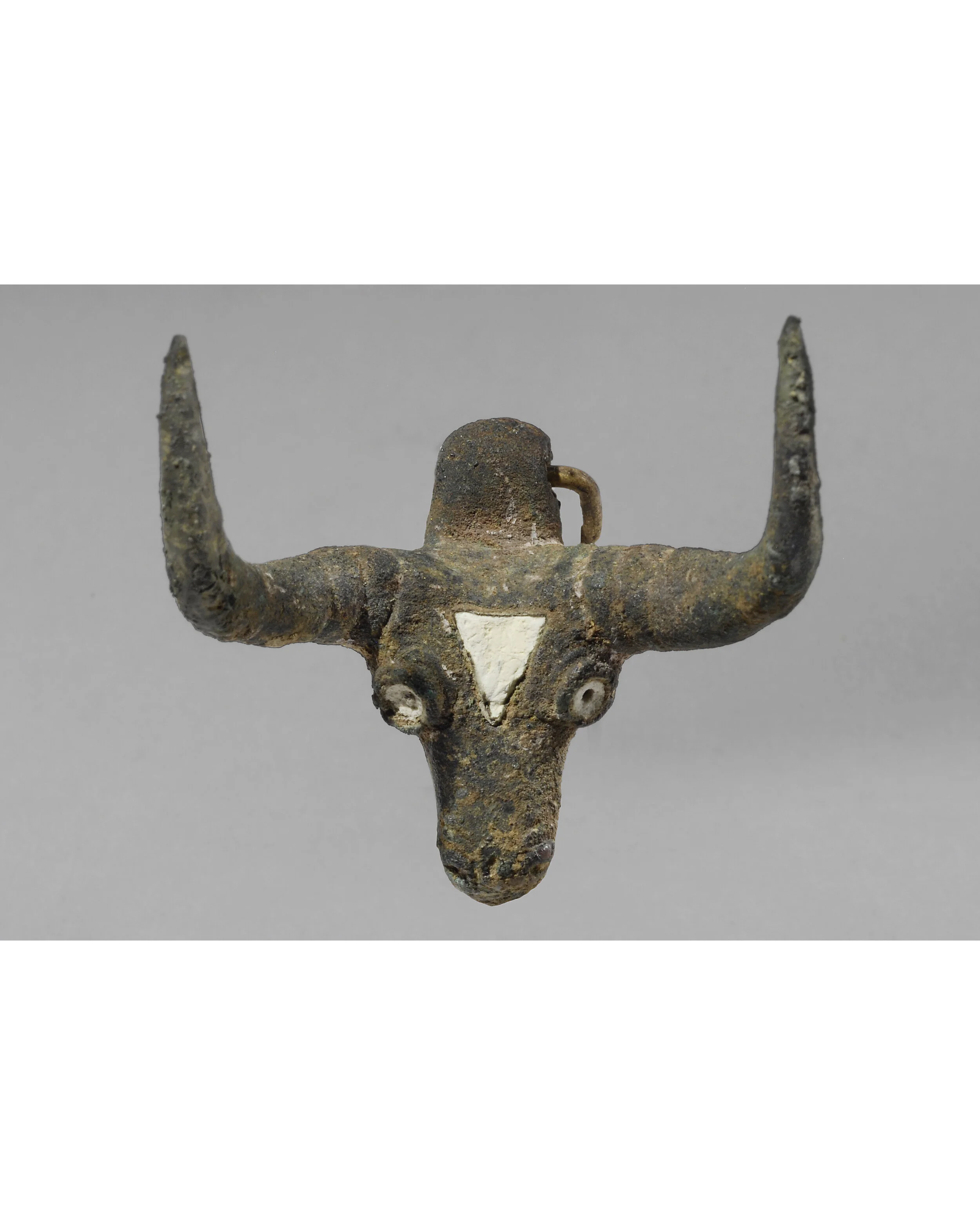Ancient Bactrian Steatite seal with Eagle and Winged Lion


Ancient Bactrian Steatite seal with Eagle and Winged Lion
Bactrian, 3500 - 2500 B.C.
Steatite
L: 3.3 cm, W: 2.75 cm
PROVENANCE: Ex- European Private Collection
SERIAL NO: 663
This beautiful small discoid tablet is engraved on both sides, one representing an eagle with spread wings and the other a winged lion with his head turned back that might be a griffin or a dragon. The piece is intact and in excellent state of preservation except for a tiny chip on the side. The patina of the black stone is mixed with some deposits of silt that brings the color of bronze to the piece. The style of the stone engraving is similar to that identified with the term Proto-Elamite which survived over a millennium in Central Asia and in the mountain valleys of Iran. These ‘flat seals’ of round or rectangular shape made of stone are distinguishing by combination of the flat surface and the incised details. The usual subject matters in the representations make references to the animal world where live the populations of birds of prey and predators. That seems to refer to the mythological stories which tell about the interaction of heroes and fantastic beasts. One of the latter is often represented, similar to our seal, looking like a winged griffin which is sometimes identified as an incarnation of the evil powers.
It is probable that the production place of these objects was in Central Asia as it is indicated by a big concentration of seals found there. The fact that they are found in the vast area proves the existence of neighboring relationship in the region.
The Altyn Tepe (Golden Mount) site in Turkmenistan provides with the indication of the use of such objects. A big number of seals found in the male tombs were placed at the pelvis level of the buried person thus indicating that initially these stones were suspended from the belt. According to the archaeologists the ‘seals’ which usually bear engravings on both sides had symbolic or apotropaic (magic) function. They probably expressed the belonging to a social group or to a site. On the other hand, the imprints of the engraved seals were found on the bases of ceramic vessels as potter’s marks.









